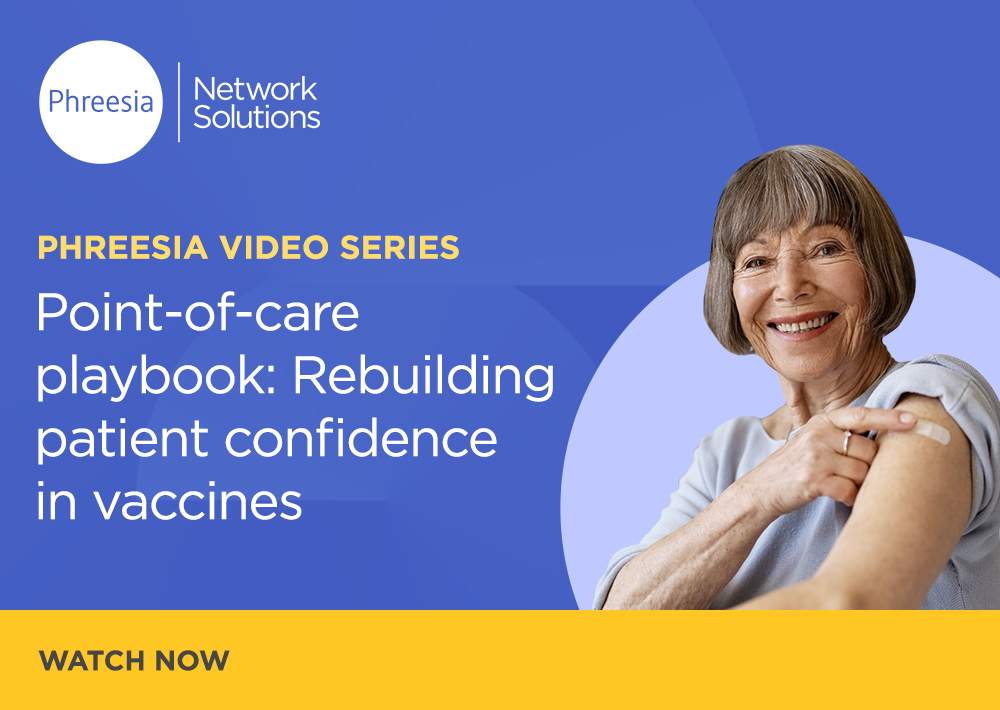
We sat down with Jordan Osborne, Associate Director of Client Experience at Phreesia, to discuss ways organizations can reach and engage patients at every step of their care journey.
A patient’s healthcare journey begins long before they walk into a doctor’s office—and it doesn’t end when they leave. From searching symptoms at 10 p.m. on a Tuesday night to checking in online for a doctor appointment to picking up (or, in many cases, not picking up) a prescription, every step of the care journey is an opportunity to engage with patients during relevant touchpoints. We sat down with Jordan Osborne, Associate Director of Client Experience at Phreesia, to discuss how to engage patients at the touchpoints that truly matter.

What’s the best way to build an omnichannel media strategy that supports patients at every stage of their healthcare journey?
Jordan Osborne (JO): The key is to look at the entire patient journey—from symptom search to post-appointment follow up—and identify where critical gaps in information and support exist. Patients need support throughout their entire experience. A true omnichannel strategy goes beyond presence; it’s about being purposeful and showing up intentionally with relevant messaging that helps patients make informed decisions and feel more confident at every stage of their journey.
How can digital point-of-care messaging support an omnichannel strategy and enhance patient education before a provider visit?
JO: Digital point-of-care messaging plays a unique role in the omnichannel mix because it reaches patients at a high-impact moment in which action can be taken, right before they talk to their provider. Some point-of-care tactics, like ours, enable teams to meet patients 1:1 on their own devices—where they are already looking, on average, over 100 times a day—to serve private, personalized messages. By delivering relevant, educational content at the point of care, organizations can increase awareness about treatments and conditions, prompt more informed and productive conversations with providers, and support shared decision making at a critical point in the patient’s care journey.
In 2023, Phreesia acquired MediFind, which uses advanced analytics to help patients with serious, chronic and rare diseases find and book the best specialty care. Brands can also display banners alongside high-value doctor profiles that are most important for their brand. How does connecting with patients during the care-booking phase help improve both health outcomes and brand trust before they have confirmed a time with a provider?
JO: This is a moment when the patient is actively evaluating their care options. They’re not just looking for any doctor—they’re looking for the right doctor. By placing your organization’s messaging next to these high-intent doctor profiles, you’re not just promoting a product or service, you’re aligning your brand or organization with the care decision itself. Your message shows exactly when and where decisions are being made, building trust before a script is ever written.
Clients you work with are also now using a post-script engagement solution, which provides patients with resources to help them adhere to their medication as soon as their prescription is written. With 1 in 3 patients never filling prescriptions and 50% not taking chronic medications as directed, what are key moments when patients are most at risk of falling off their treatment plan?
JO: The biggest drop offs tend to happen right after being prescribed a new, more complicated treatment regimen, at the pharmacy when facing high costs or confusion, or a few weeks into treatment when side effects or doubts kick in. Too often, once a prescription is written, patients are left without clear resources to guide them through what’s next—navigating affordability, managing side effects or knowing how to talk to their doctor—leaving them unsure and unsupported at the exact moment they need reassurance and clarity.
Given how common non-adherence is, especially in patients with chronic conditions, how can personalized messaging help patients stay on track with complex treatment plans?
JO: An educational resource that speaks to that patient’s condition or barriers—like tips for managing potential side effects or help navigating costs—can be the difference between starting treatment and stopping or not following the plan made with a provider. It shows you understand what they’re going through and gives practical support to overcome barriers, which builds trust and improves outcomes.
At Phreesia, we’re committed to making care easier every day and giving patients the tools they need to take an active role in their health. What drives you in helping organizations deliver meaningful messaging that helps achieve these goals and improves outcomes?
JO: What motivates me personally is that everything Phreesia does is rooted in improving patient outcomes by focusing on patient activation. In other words, we’re helping patients become more engaged by building their confidence to manage their own healthcare decisions and take an active role in their journey. The healthcare system can be incredibly complex and often intimidating or overwhelming for patients. By providing content that boosts health literacy, we’re inspiring real behavioral change and driving meaningful outcomes. Our data backs it up. We’ve helped drive more than 5,300 breast cancer tests and screenings in the last year, our campaigns have helped close the gaps in recommended vaccine schedules, and we’ve helped countless patients identify care routines that work for their needs. These are just a few examples. We consistently see that the right message, delivered at the right time, leads to meaningful action—whether it’s filling a prescription, starting a conversation with a provider or sticking to a treatment plan.
Ready to meet patients at the touchpoints that matter? Request a demo with one of our patient engagement experts to learn how Phreesia can help engage millions of patients with your organization.


